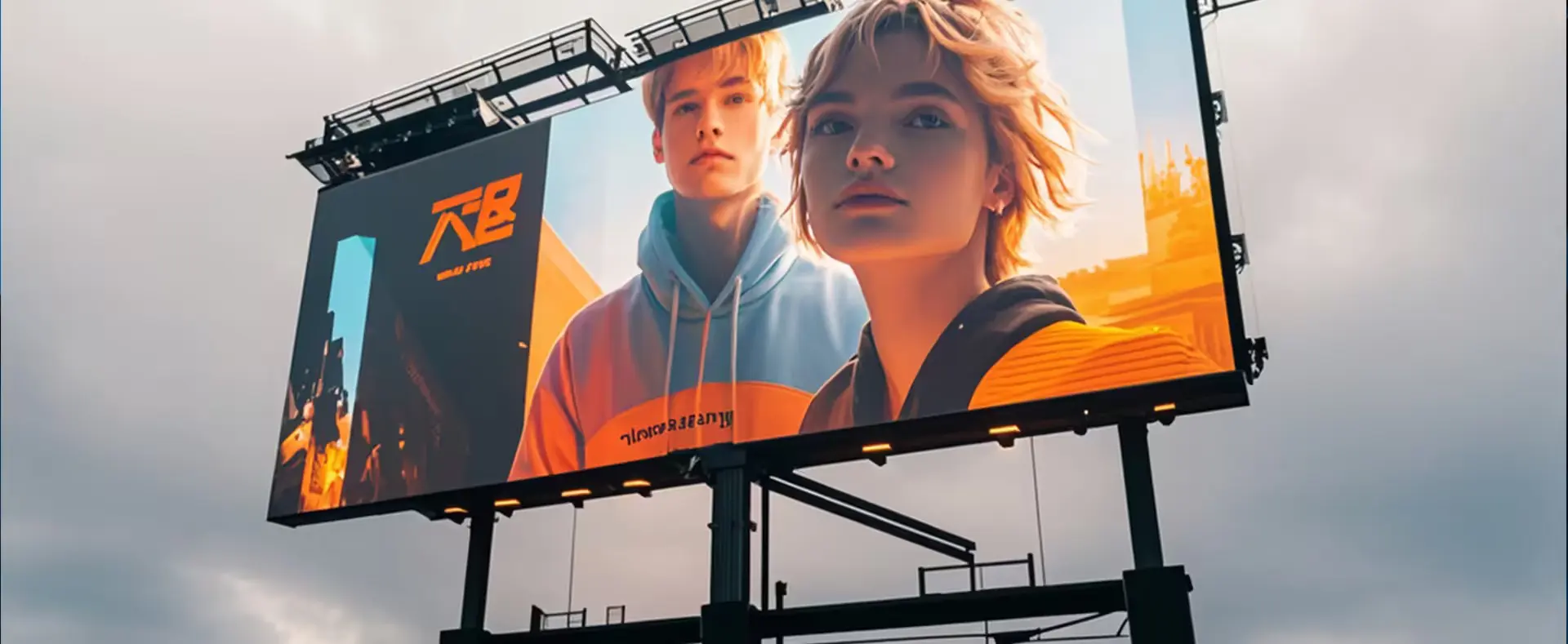Choosing an outdoor LED Screen requires careful consideration of the specific installation environment, along with the technical specifications, durability, and adaptability of the display. Below are key factors to consider:
1. Outdoor LED ScreenAmbient Brightness
- High-Brightness Environments (e.g., Direct Sunlight)
- Choose a high-brightness LED display with brightness levels of ≥5000 nits to ensure clear visibility under strong sunlight.
- Consider displays with automatic brightness adjustment functions to adapt to ambient light and avoid being too bright at night.
- Low-Brightness Environments (e.g., Shaded Areas)
- A display with brightness levels between 3000-10000 nits is sufficient, ensuring energy efficiency while meeting display requirements.
2. Outdoor LED Display Weather Conditions
- High-Temperature Environments
- Choose an LED display with a good heat dissipation system, such as fan cooling or liquid cooling, to prevent overheating and component aging.
- Use high-temperature-resistant power supplies and LED chips for stable long-term operation.
- Low-Temperature Environments
- Ensure the LED display operates within a wide temperature range (e.g., -40°C to 70°C) to withstand cold weather.
- Opt for power systems with anti-freezing features.
- High-Humidity or Rainy Environments
- Select LED displays with an IP rating of at least IP65 to prevent water and moisture ingress.
- Ensure anti-corrosion treatment, such as using oxidation-resistant circuit boards and housing materials.
- Windy Environments
- Choose lightweight screen designs to reduce wind load pressure.
- Ensure the screen structure includes strong installation brackets and wind-resistant design.
3. Installation Location
- High-Altitude Installation (e.g., Building Facades)
- Opt for lightweight and high-transparency LED screens (e.g., transparent LED displays) to reduce structural load and maintain aesthetic appeal.
- Ensure the screen has earthquake-resistant and wind-resistant designs.
- Ground Installation (e.g., Squares, Stage Backdrops)
- Select robust full-color LED screens with good impact resistance and protection features.
- Add dustproof measures to prevent ground dust from affecting display performance.
4. Viewing Distance
- Long-Distance Viewing (e.g., Highway Billboards)
- Choose larger pixel pitches (e.g., P8, P10, P16) suitable for long-distance viewing, which also reduces costs.
- Resolution can be moderate, but text and images must remain clear.
- Short-Distance Viewing (e.g., Mall Entrances, Large Events)
- Choose smaller pixel pitches (e.g., P4, P5, P6) to ensure clear and sharp display quality for close viewing.
5. Content Display Requirements
- Dynamic Video Content
- Select LED displays with a high refresh rate (≥1920Hz) to avoid flickering or ghosting during video playback.
- Static Advertisement Content
- Moderate resolution screens are sufficient, but color performance and brightness uniformity should be prioritized.
6. Maintenance Costs and Complexity
- Front Maintenance Design
- Ideal for installations with limited space. Front-maintenance screens allow quick disassembly and repair.
- Rear Maintenance Design
- Suitable for installations where rear access is possible, offering lower maintenance costs.
7. Budget and Lifespan
- For high-end needs, choose LED chips with superior quality (e.g., Nationstar) and power supplies (e.g., Mean Well) for longer lifespan and better performance.
- For budget-conscious projects, consider cost-effective brands while ensuring good after-sales service and warranty.
Recommended Technical Parameters
| Parameter | Recommended Value/Range | Description |
|---|---|---|
| Brightness | 3000-10000 nits | Adjust according to ambient light |
| Pixel Pitch | P4, P6, P8, P10 | Select based on viewing distance |
| IP Rating | IP68 | Waterproof and dustproof performance |
| Refresh Rate | ≥3840Hz | High refresh rate for dynamic content |
| Operating Temperature | -40°C to 70°C | Adaptability to extreme weather |
| Lifespan | ≥100,000 hours | Long lifespan with minimal degradation |














